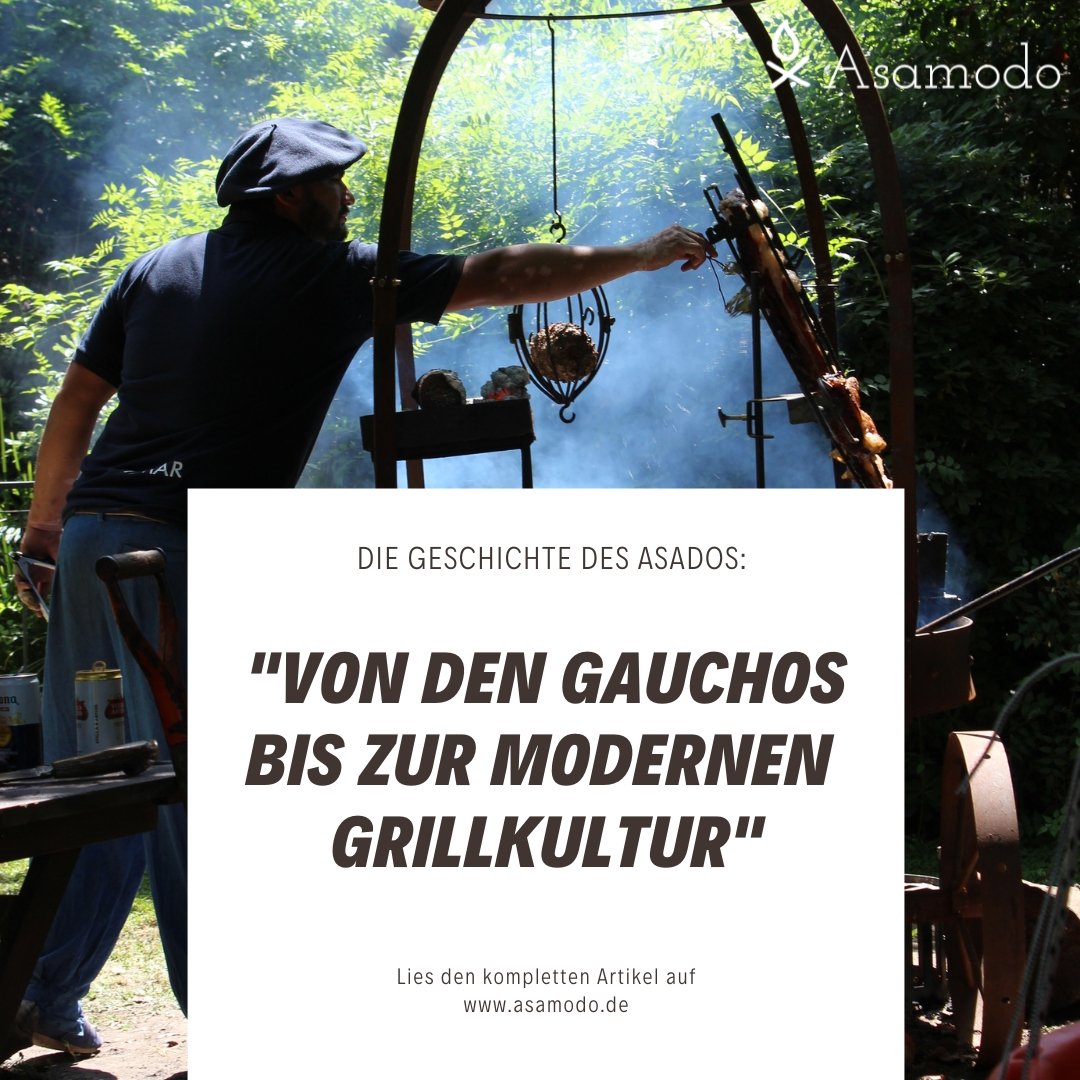Asado - A fire, a ritual, a passion. Originally introduced by Gauchos on the Argentine Pampas, Asado is today an indispensable part of South American culture and cuisine.
Asado is one of the oldest and most popular ways to grill meat and has become an integral part of South America's cultural heritage. In Asado, various types of meat are roasted on an open fire or grill, while spices, herbs, and vegetables are added to give the meat more flavor.

It is a popular preparation method in many South American countries and is considered a kind of "national dish". People in South America love Asado and enjoy it not only because of the taste but also because it is a part of the social culture.

What is the tradition of Asado?
Asado is a traditional Argentine way of grilling, where large pieces of beef are cooked over an open fire. The tradition dates back at least to the Gauchos, the cowboys of South America, and is closely linked to the country's history and culture. It is an important part of Argentine culture and is often enjoyed at family gatherings, festivals, and among friends.
Since the Gauchos lived in the Pampa, they ate the meat of the cattle they slaughtered on site immediately. For this, they cut the meat into pieces and stretched it on the Asado cross (a la estaca). This is the oldest and most original way to make an Asado.
Today, the Asado consists of several courses that are prepared over a period of several hours.
Typical dishes include chorizo, morcilla (blood sausage), ribs, T-bone steaks, and flank steak. The way the meat is prepared is unique to each asador and can vary from region to region.

What is the origin of Argentine Asado?
The origin of the Argentine Asado is a symbol of freedom and the passion of the Argentine people.
The Asado tradition is characterized by its Focus on community and friendship off. It is a time when one can friends and family come together, to enjoy good food and company. The long preparation time and the open fire contribute to a relaxed and cozy atmosphere It's about the journey; the journey is the goal, not the fast food.
This is a wonderful tradition that has existed for centuries and connects people from all parts of South America.


With the arrival of European immigrants in the 19th century, various techniques and spices from Europe were introduced, enriching the Asado experience. Since then, Argentine culture has further developed the Asado and made it a firm tradition enjoyed at family celebrations, festivals, and among groups of friends.
Asado is more than just a meal - it is a passion and a tradition that is passed down from generation to generation.








Leave a comment
All comments are moderated before being published.
This site is protected by hCaptcha and the hCaptcha Privacy Policy and Terms of Service apply.